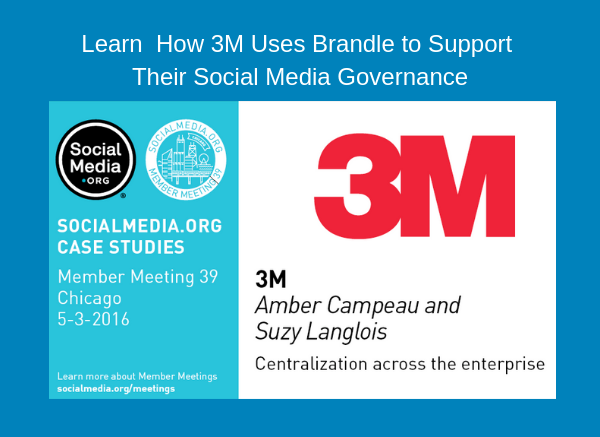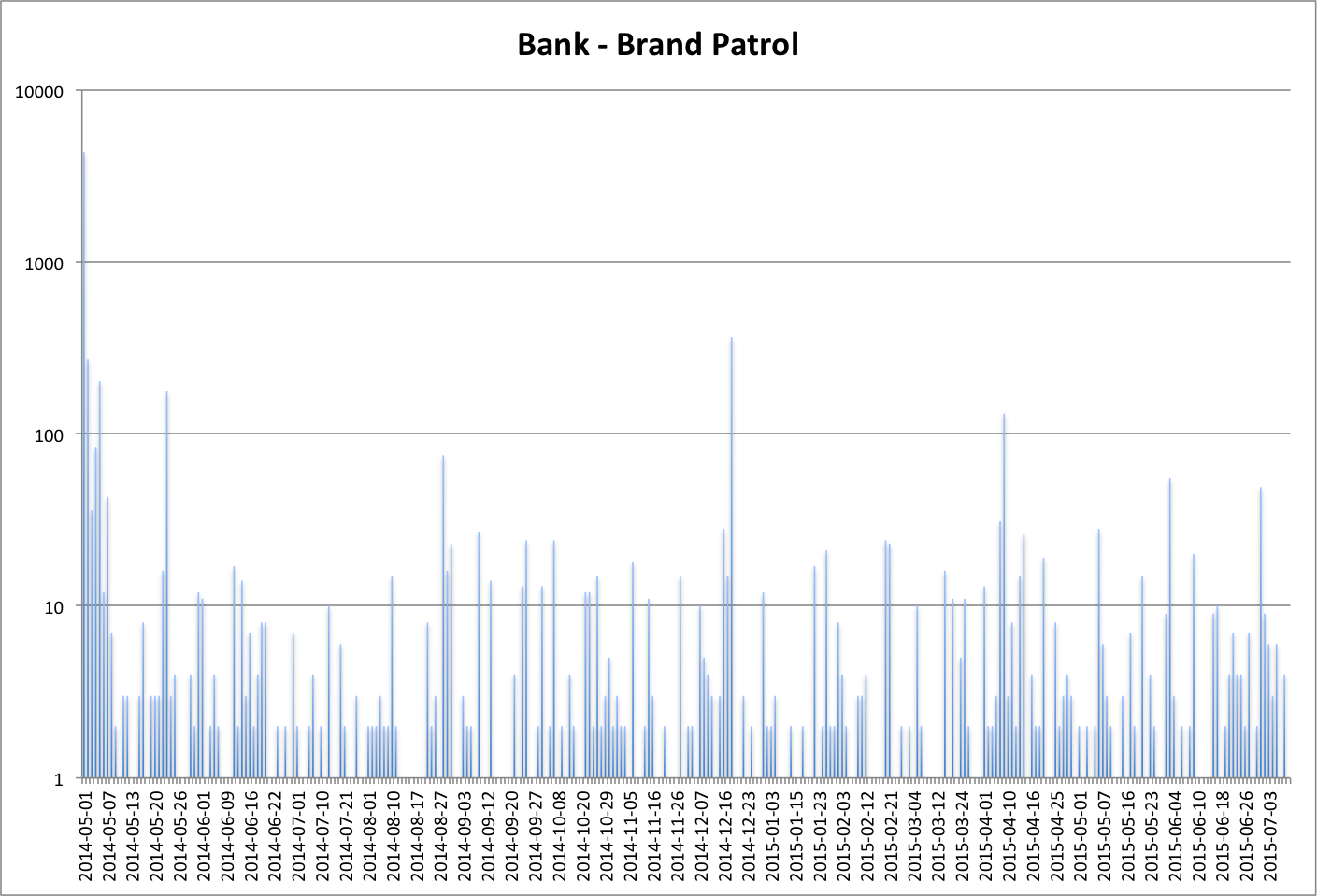
Many companies now disclose domain names as part of the due diligence process of a corporate merger or acquisition but social media is often an afterthought...and a painful one. Fortunately, the legal profession is starting to take note as evidenced by this insightful article, "Acquisitions: Are you doing your #duediligence?", by Siobhán Langwade and Kate Schmit of Stevens & Bolton LLP.
In the year and half we've been offering the Brandle Presence Manager as a platform for discovering and inventorying a corporate social media footprint, we have discovered:
- Companies consistently and greatly underestimate the size of the corporate web presence.
- No company has a single, complete and accurate inventory of their web properties.
- Headquarters often does not know which employees created and/or manages which properties.
- Credentials (passwords) are often not centrally managed nor available for all properties.
- Control of these accounts is at greater risk of being lost post acquisition and regaining control can be a painful, slow and relatively expensive process.
- Once the acquisition is complete, this becomes the headache of the acquiring company.
Social media accounts are intangible property and now an important part of the list of assets for the target company. Here’s how to secure the social media properties as part of the merger and acquisition due diligence process.
5 STEPS FOR HANDLING SOCIAL MEDIA DURING M&A PROCESS
As an acquiring company, there is no reason for this headache to be your problem...if you follow a few simple steps.
Step 1: Run a Social Media Discovery on the Target Company
You can use a tool like the Brandle Presence Manager to run a discovery on the company you are about to acquire. The good thing about a tool like this is that it requires no confidential information because you are searching public information on the web. Until recently, the challenge was how to build a comprehensive corporate inventory of social media, domains and websites. You could attempt to do this manually but as we've shown in this web and social media account case study, it is slow, painful and not very accurate. Fortunately there is now a tool that automates and greatly simplifies the process.
Step 2: Have the Target Company Review the Discovery
The automated discovery is likely to reveal a significant list of properties. Now is the time to hand this over to the company to be acquired and ask them to review and process what was found. They should be able to account for every point-of-presence which is discovered as the property of: the company, an employee, a partner, an advocate, an infringer or an un-related but benign entity.
Step 3: Ensure Control of the Corporate Properties
The next step is to ensure that the target company has control of the corporate properties. The company should be able to demonstrate that it knows who is managing each property and that proper measures have been taken to ensure the property stays with the enterprise, should that employee leave the company. This generally means four things:
- the company has a social media policy that addresses ownership;
- the employee has acknowledged receipt of the policy;
- the employee has affirmed that he or she does not have any claim to any properties he or she may have created in the course and scope of his or her work.
- the company has access to the credentials of those properties.
Step 4: If Necessary, Address Third-Party Properties
It's possible that some third party properties may require some attention as part of the M&A transaction. For example, if the company is in a regulated industry, have all employee social media properties been brought into compliance? If there are partners who are mis-using the brand or third parties who are infringing on the brand, has appropriate action been taken? The brand is a significant part of the value of any company so any potential damage to it should be considered (e.g. are there a lot of counterfeiters out there?)
Step 5: Consolidate and Re-Brand
After the transaction is complete, it will now be much easier to bring the acquired corporate inventory into your corporate IT infrastructure. Also, now that you know you have access and control of these properties, rebranding these properties will be much easier.
CONCLUSION:
Too often social media is an afterthought and cleaning up this mess falls on Marketing, PR and/or IT. It doesn't have to be this way and putting the burden on the company to be acquired as part of the due diligence process is a great way to ensure a smooth transition post acquisition.
To read more about the challenges of managing a distributed brand presence and why a web and social media audit should be part of the M&A due diligence process:









